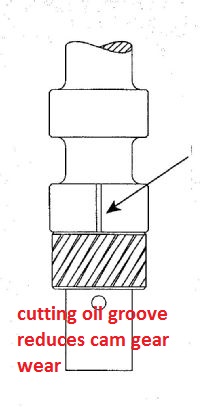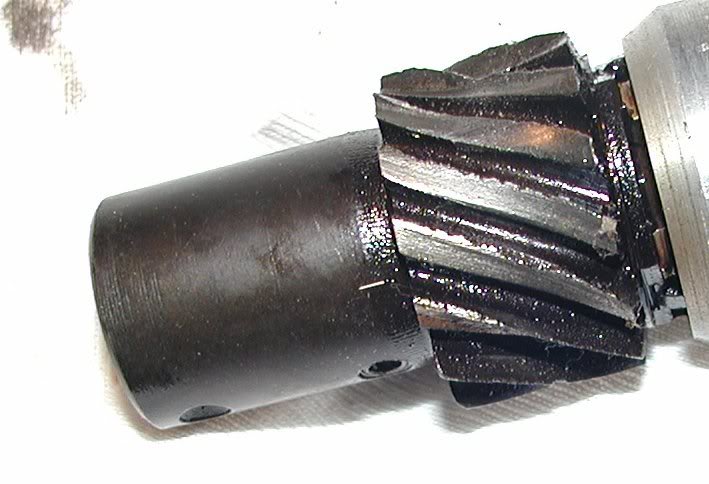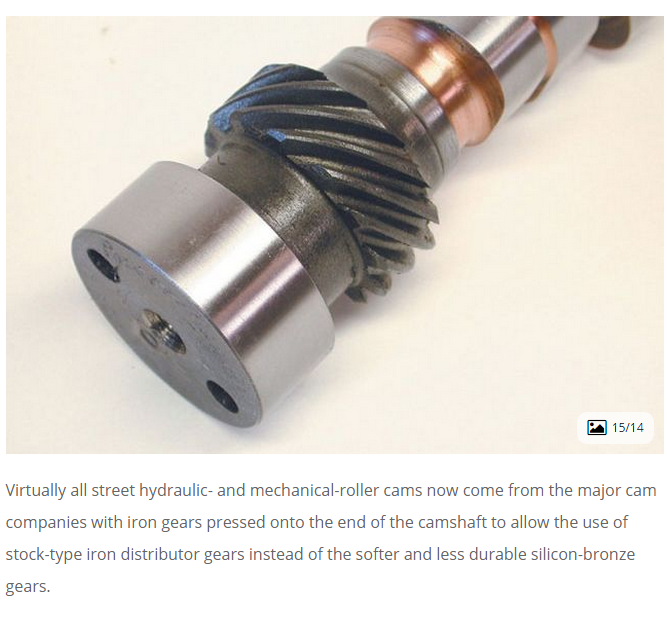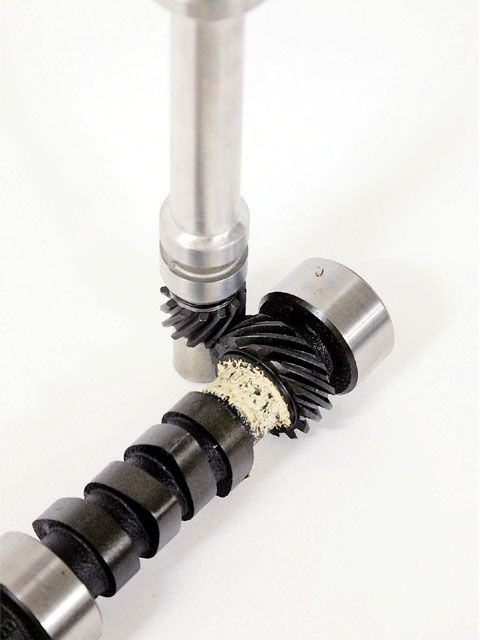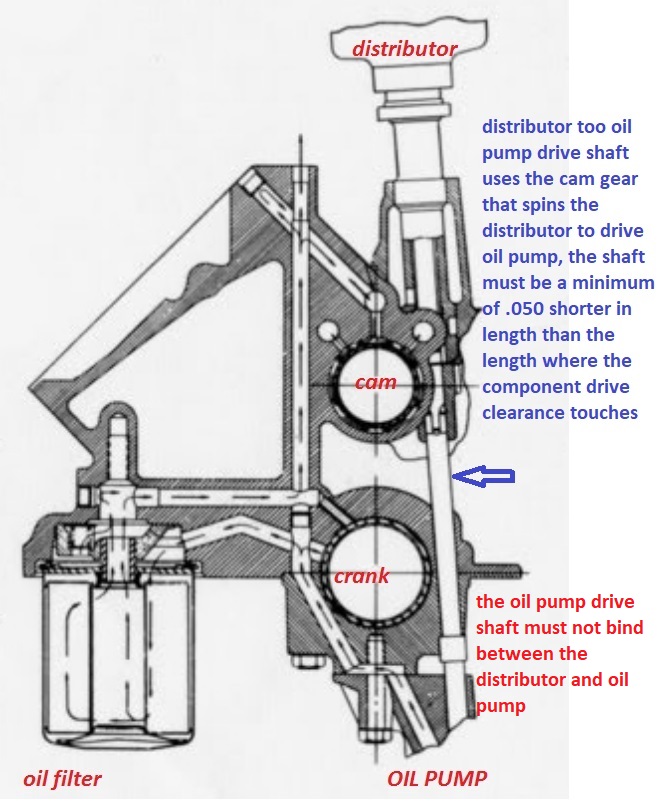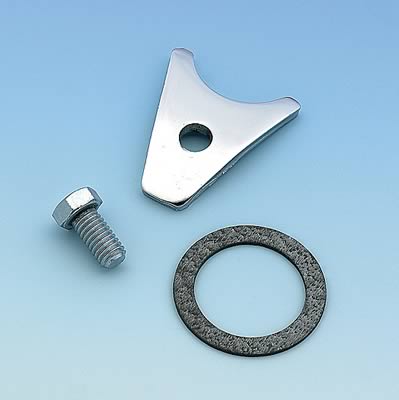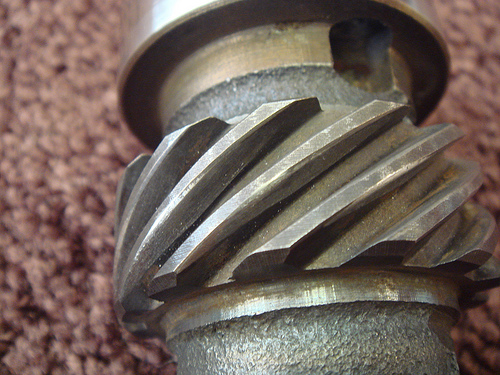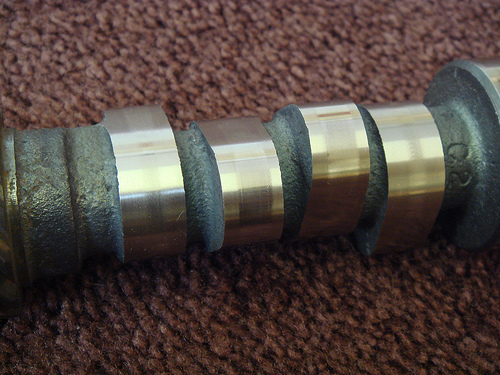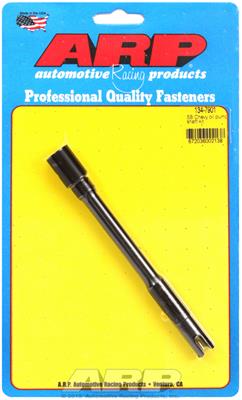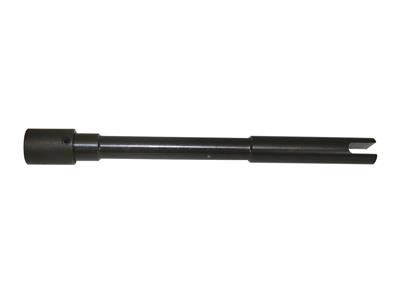GRUMPY?
well done some tuning to the truck felt really good better then ever! Decided to go out for a nice drive tonight and had no spark so I started hunting this is what I found
Can you tell me what caused this? And being the truck felt so good how much damage go’s along with this? I’m not sure if you can tell from the pictures is wear not broke or chunks missing, the dirt you see is from me wiping it down (not metal)
This is out of my 383 Stroker Roller Engine
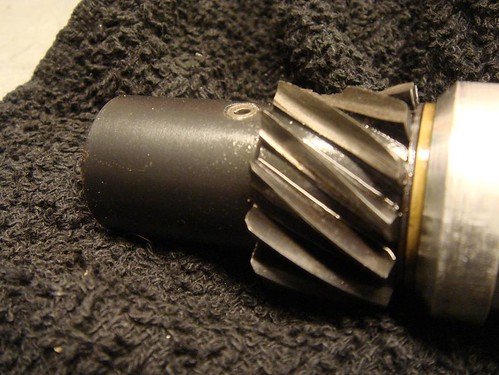
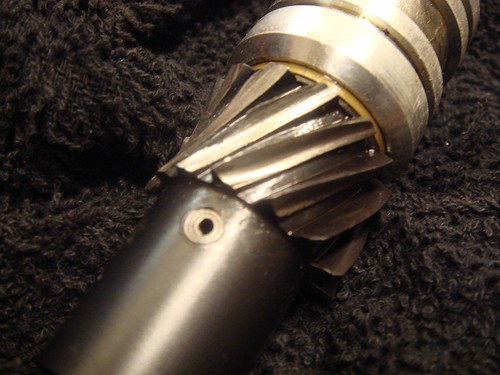
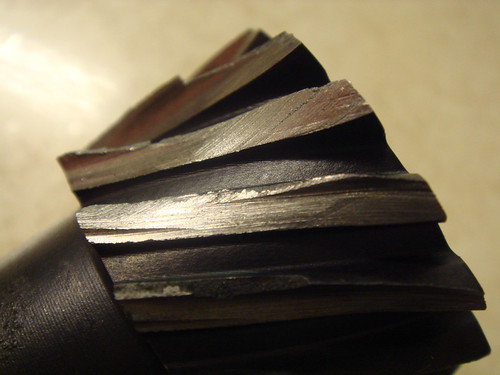
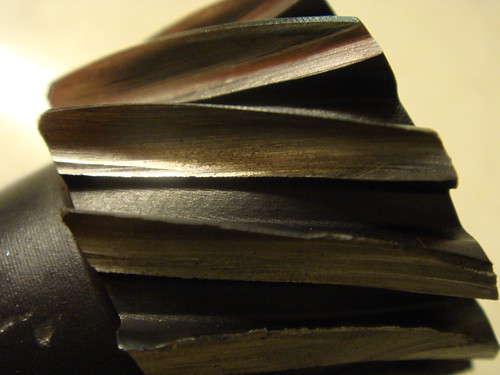
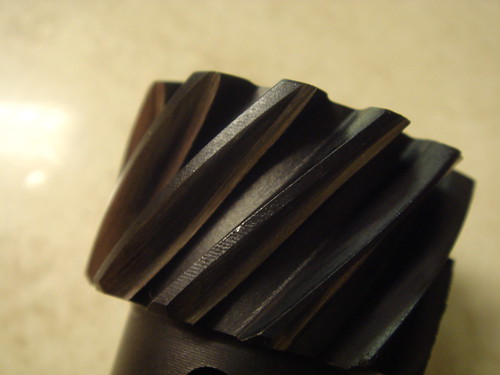
READ THESE LINKS
http://www.carcraft.com/techarticles/di ... index.html
viewtopic.php?f=52&t=57&p=70&hilit=cast+cores#p70
check with the manufacturer anytime you have similar questions, on any valve train or ignition component.
but Id bet the stock distributor gear is what will be recommended,on any new engine build with a new cam installed.
this whole web site is designed to make it far FAR easier on guys wanting to build the required knowledge base required to learn the skills youll require to excell in this hobby.



coat any new cam and distributor gears with a good moly paste lube
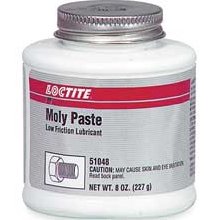
READ THE RELATED INFO CAREFULLY AND USE A GOOD MOLY LUBE ON THE DISTRIBUTOR AND CAM GEARS

most stock chevy v8 distributors will use this gear. .491 diam.
https://www.summitracing.com/parts/ado-10456413/overview/make/chevrolet
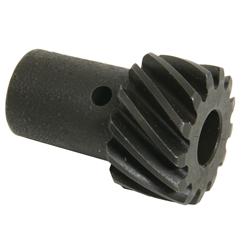
many aftermarket distributors will use this gear .500 diam.
https://www.summitracing.com/parts/msd-8561/overview/make/chevrolet

bronze distributor gears are generally used on billet steel roller cam cores
https://www.summitracing.com/parts/msd-8471/overview/make/chevrolet
http://garage.grumpysperformance.com/index.php?threads/distributor-gear-wear.1701/#post-5252
http://garage.grumpysperformance.com/index.php?threads/distributor-gear-info.1186/#post-4155
http://garage.grumpysperformance.com/index.php?threads/oil-system-mods-that-help.2187/#post-5890
http://garage.grumpysperformance.co...stalling-the-intake-manifold-distributor.464/
http://garage.grumpysperformance.co...ear-articles-you-need-to-read.282/#post-61429
http://garage.grumpysperformance.co...ting-rebuilding-hei-ignitions.2798/#post-7247
http://garage.grumpysperformance.co...y-in-building-a-good-engine.11682/#post-54682
THE CAM MANUFACTURER WILL BE ONLY TOO GLAD TO SELL THE CORRECT MATCHING DISTRIBUTOR GEAR TOO YOU
and like a lifter on a cam lobe it is usually going to last longer if both the cam and distributor gear are new, coated with moly assembly grease and allowed to lap in and mate surfaces , rather than use used worn distributor gears on new cams
viewtopic.php?f=70&t=251&p=299&hilit=shim+distributor#p299
viewtopic.php?f=54&t=2187&p=5890#p5890
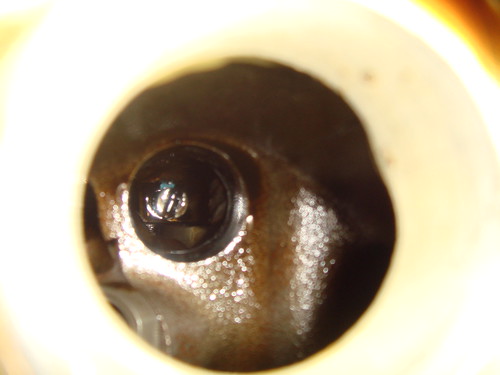
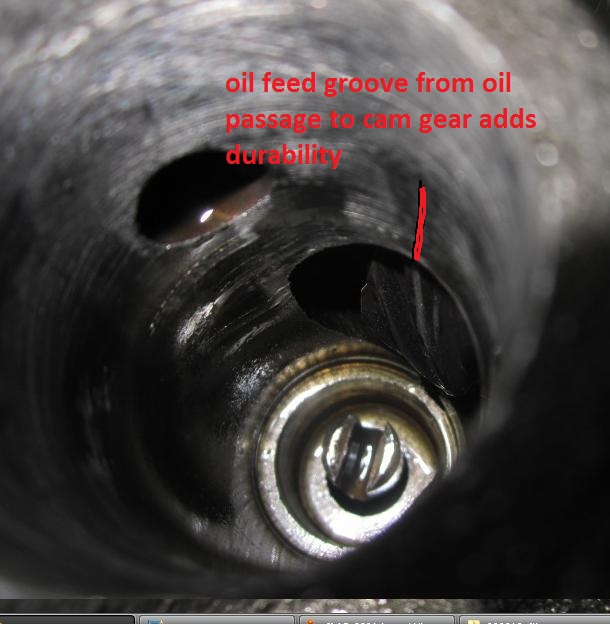
keep in mind the distributor base forms one wall of the lifter gallery oil passage

so grooving the lower oil band helps spray extra oil on the distributor/cam gears contact area
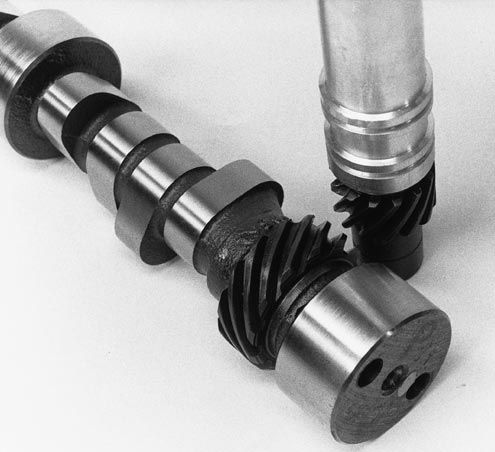
any time you change cams youll need to use a matching distributor gear, the cam manufacturer should be able to help tell you what matches, obviously checking clearances helps
and dipping the gear in moly assembly lube before it installed helps
be sure you inspect the distributor gear for excessive wear
especially if you changed from a flat tappet to a roller cam.
if your seeing the timing change a few degrees, back and forth,
slack in a worn, loose timing chain, worn distributor gear or not having the proper shim clearance on the distributor center shaft will provide slop that allows timing to vary several degrees
http://www.summitracing.com/parts/CCA-12200/
http://www.summitracing.com/parts/CCA-12140/
MOST of the chevy and after market cams will work with the standard replacement mellonized distributor gears
http://garage.grumpysperformance.com/index.php?threads/slowing-distributor-gear-wear.57/#post-70
http://garage.grumpysperformance.co...the-intake-manifold-distributor.464/#post-570
http://garage.grumpysperformance.com/index.php?threads/shiming-a-distributor.251/#post-299
http://garage.grumpysperformance.com/index.php?threads/distributor-gear-wear.1701/#post-5252
well done some tuning to the truck felt really good better then ever! Decided to go out for a nice drive tonight and had no spark so I started hunting this is what I found
Can you tell me what caused this? And being the truck felt so good how much damage go’s along with this? I’m not sure if you can tell from the pictures is wear not broke or chunks missing, the dirt you see is from me wiping it down (not metal)
This is out of my 383 Stroker Roller Engine





READ THESE LINKS
http://www.carcraft.com/techarticles/di ... index.html
viewtopic.php?f=52&t=57&p=70&hilit=cast+cores#p70
check with the manufacturer anytime you have similar questions, on any valve train or ignition component.
but Id bet the stock distributor gear is what will be recommended,on any new engine build with a new cam installed.
this whole web site is designed to make it far FAR easier on guys wanting to build the required knowledge base required to learn the skills youll require to excell in this hobby.
coat any new cam and distributor gears with a good moly paste lube

READ THE RELATED INFO CAREFULLY AND USE A GOOD MOLY LUBE ON THE DISTRIBUTOR AND CAM GEARS

most stock chevy v8 distributors will use this gear. .491 diam.
https://www.summitracing.com/parts/ado-10456413/overview/make/chevrolet

many aftermarket distributors will use this gear .500 diam.
https://www.summitracing.com/parts/msd-8561/overview/make/chevrolet

bronze distributor gears are generally used on billet steel roller cam cores
https://www.summitracing.com/parts/msd-8471/overview/make/chevrolet
http://garage.grumpysperformance.com/index.php?threads/distributor-gear-wear.1701/#post-5252
http://garage.grumpysperformance.com/index.php?threads/distributor-gear-info.1186/#post-4155
http://garage.grumpysperformance.com/index.php?threads/oil-system-mods-that-help.2187/#post-5890
http://garage.grumpysperformance.co...stalling-the-intake-manifold-distributor.464/
http://garage.grumpysperformance.co...ear-articles-you-need-to-read.282/#post-61429
http://garage.grumpysperformance.co...ting-rebuilding-hei-ignitions.2798/#post-7247
http://garage.grumpysperformance.co...y-in-building-a-good-engine.11682/#post-54682
THE CAM MANUFACTURER WILL BE ONLY TOO GLAD TO SELL THE CORRECT MATCHING DISTRIBUTOR GEAR TOO YOU
and like a lifter on a cam lobe it is usually going to last longer if both the cam and distributor gear are new, coated with moly assembly grease and allowed to lap in and mate surfaces , rather than use used worn distributor gears on new cams
viewtopic.php?f=70&t=251&p=299&hilit=shim+distributor#p299
viewtopic.php?f=54&t=2187&p=5890#p5890


keep in mind the distributor base forms one wall of the lifter gallery oil passage

so grooving the lower oil band helps spray extra oil on the distributor/cam gears contact area

any time you change cams youll need to use a matching distributor gear, the cam manufacturer should be able to help tell you what matches, obviously checking clearances helps
and dipping the gear in moly assembly lube before it installed helps
be sure you inspect the distributor gear for excessive wear
especially if you changed from a flat tappet to a roller cam.
if your seeing the timing change a few degrees, back and forth,
slack in a worn, loose timing chain, worn distributor gear or not having the proper shim clearance on the distributor center shaft will provide slop that allows timing to vary several degrees
http://www.summitracing.com/parts/CCA-12200/
http://www.summitracing.com/parts/CCA-12140/
MOST of the chevy and after market cams will work with the standard replacement mellonized distributor gears
http://garage.grumpysperformance.com/index.php?threads/slowing-distributor-gear-wear.57/#post-70
http://garage.grumpysperformance.co...the-intake-manifold-distributor.464/#post-570
http://garage.grumpysperformance.com/index.php?threads/shiming-a-distributor.251/#post-299
http://garage.grumpysperformance.com/index.php?threads/distributor-gear-wear.1701/#post-5252
Last edited by a moderator:


